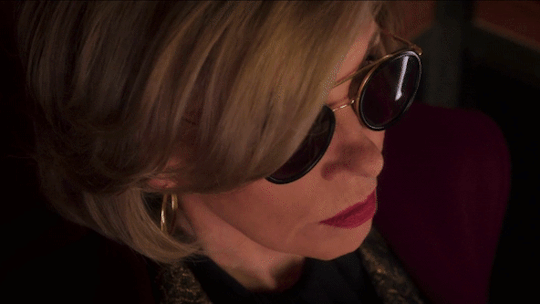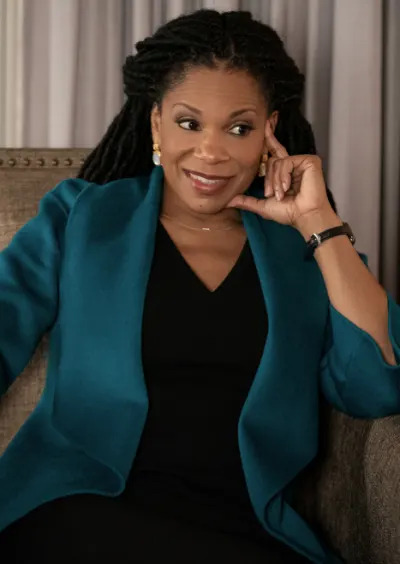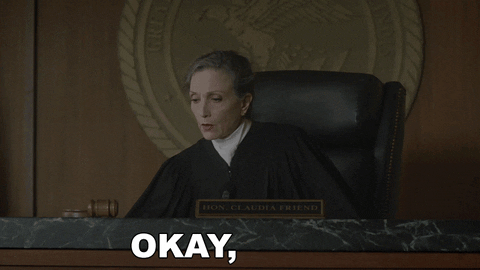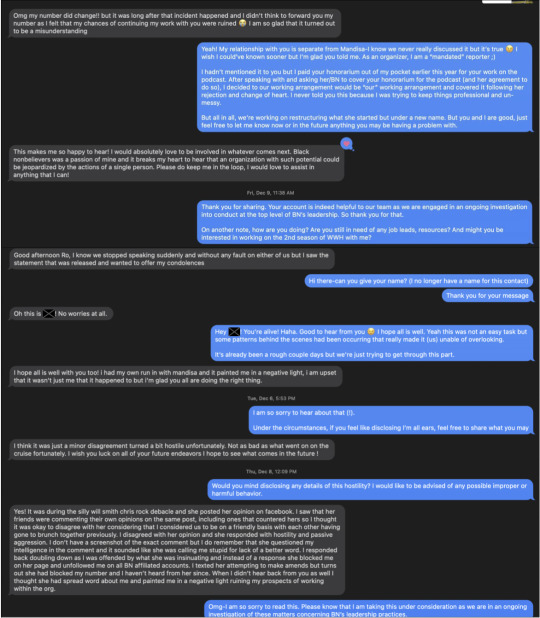#The Ed Martin Movement
Text
Eric Hananoki at MMFA:
Right-wing commentator Ed Martin, who was recently appointed to a senior position for the Republican National Convention, has complained about Spanish speakers in the United States and said he is a “big admirer” of leading white nationalist group VDare.
VDare has posted content claiming that “one problem with these Hispanic immigrants is their disgusting behavior”; “America does not need ANY immigrants from Africa”; the United States needs to “rethink Martin Luther King Day”; “Miscegenation has risks”; antifa and Black Lives Matter protests in 2020 might be part of a “Jewish coup”; and the country should “EXPEL Muslims.”
Martin is a podcaster, author, and frequent guest on right-wing media programs. He briefly worked as a pro-Trump pundit on CNN from 2017 to 2018 but was fired after he repeatedly embarrassed the network, including attacking his colleagues as “Black racists.” Martin, who was on a 2020 Trump campaign advisory board, was also a notable figure after the 2020 presidential election when he helped organize “Stop the Steal” rallies and later defended accused participants in the January 6 Capitol insurrection. He has also pushed the QAnon conspiracy theory, repeatedly using the movement’s slogan “WWG1WGA,” short for “Where we go one, we go all.”
The RNC announced Martin’s appointment as deputy policy director of the Republican National Convention’s Committee on the Platform on May 15, with RNC Chairman Michael Whatley praising Martin and other selections as “brilliant” and having “sound judgement and principled vision.” Martin joins Russ Vought, a key Project 2025 figure who has pushed for Christian nationalism and “ideological purity tests” for civil servants, on the committee.
[...]
Martin also repeatedly hosted VDare leader and white nationalist Peter Brimelow on his now-defunct radio program The Ed Martin Movement. During an episode that aired on November 29, 2018, Martin praised Brimelow as “a guy worth listening to” and told him, “I'm always glad to give you a voice, you’re always welcome here.” (In addition to leading VDare, Brimelow has, among other things, pushed an effort to “rethink Martin Luther King Day,” “arguing that MLK was a deeply flawed figure and an inappropriate role model for American whites.”)
Right-wing commentator Ed Martin was named to a senior position within the RNC, and he has stated his admiration for White Nationalist group VDARE.
#RNC#Ed Martin#VDare#Peter Brimelow#White Nationalism#Antisemitism#Michael Whatley#The Ed Martin Movement#Phyllis Schlafly Eagles
8 notes
·
View notes
Text

litany of the martyrs (click for better resolution!)
#at some point i wanted to make an illustration for each character but in retrospect maybe each is multiple song-coded..#drew the sketch for a quincy thing after a chat with a mutual reminded me this song existed dfsghjkl and then spent weeks rendering this#quincy cynthius martin#adamandi#i'm finally done with this! the saints especially were joys to paint and the halo a menace.... this has been the most ambitious one so far.#but it also took quite long because i only worked on it <engages with quincy> when mentally okay to deal with the themes. i'm not religious#but i do identify with the irrational(?ish) guilt + family legacy + academic achievement + disregard for self. also more complex thoughts#about love [but depsite quincent being a large part of quincy's character this piece deals with mostly the Rest of it. so another time..]#anyways! in the original sketch- the saints had heads bent towards quincy so the halo spikes pointed at him. but this worked better! halos#of the saints implying/creating one for quincy was a concept from the start though. in the show they don't touch him directly here but#differences in mediums i think- i don't have time in an image to craft a narrative so everything has to be happening. also artistic liberty#misc inspiration for this includes stained glass windows. i might have maybe misinterpreted the saint costume but i think i logic-ed it out#as the cloth part following a nun's habit w the hood. and then halo above. the material is also more transparent originally but i had. um.#too much fun painting fabric folds.. if you look closely you can see the basis of faces though behind the cloth; but only the vague shapes#because smth obscurity + inhumanness// cassian is the only one i gave a mouth though. that stems from melliot's post about the saints and#st cassian as spokesperson (<- did research teehee!) that's also how i found out which costume = which saint. speaking of which.#left to right: 'st lucy take my hand' // 'st lawrence give me strength' (presses quincy forward; but hand on shoulder connotates guidance)#/'st cassian help me smile' (quincy's mouth is btwn a grimace and a smile; tilts up at side. also no direct touch bc added insidiousness.)#//'st jude [...] i hope your causes burn' (jude's hand is in two places to show movement- nearing the flame and then snatching back; burnt)#other notes: at the midst of the flame the core is shaped like a human heart /the saints and their wax are all melting like the candle for#fun visual effect and also this way they are even less tangible <real>. perks of painting as a medium i guess. // also insp from icarus?#wax and burning imagery; looking at the halo and rays as parallel to sun that burns. too close to the sun; melting; hurting; hurtling //#candles at bottom are a nod to the frankly gorgeous set// also the entire composition kind of stems from the lyric <what use is a candle if#both ends aren't burning>; the two sides between the concepts of catholic guilt and academic perfection that spur quincy#the halo above (saints and guilt; litanyofthemartyrs) and the 'halo' below (academic papers; insp from choreo for perfect at school)#the papers were originally supposed to be more glowy. but i like the idea of it now being a reflection of how quincy's priorities shift#also of note is that <candle> in centre = quincy; w burning candle + aforementioned heart in flame -> most human; idea of love + passion#last thoughts: kneeling + hands close tgt = prayer //wax dripping onto the red As make an effect that looks like blood. because i like#hiding that within the adamandi pieces :OO continuity!! // i've run out of tags but yeah! had fun with this one! every so often i go a#little insane in making art and the final result astounds even me. ngl i'm quite proud of this one. pretty colours <3333
306 notes
·
View notes
Text

E.2 What do eco-anarchists propose instead of capitalism?
Given what eco-anarchists consider to be the root cause of our ecological problems (as discussed in the last section), it should come as no surprise that they think that the current ecological crisis can only be really solved by eliminating those root causes, namely by ending domination within humanity and creating an anarchist society. So here we will summarise the vision of the free society eco-anarchists advocate before discussing the limitations of various non-anarchist proposals to solve environmental problems in subsequent sections.
However, before so doing it is important to stress that eco-anarchists consider it important to fight against ecological and social problems today. Like all anarchists, they argue for direct action and solidarity to struggle for improvements and reforms under the current system. This means that eco-anarchism “supports every effort to conserve the environment” in the here and now. The key difference between them and environmentalists is that eco-anarchists place such partial struggles within a larger context of changing society as a whole. The former is part of “waging a delaying action against the rampant destruction of the environment” the other is “a create movement to totally revolutionise the social relations of humans to each other and of humanity to nature.” [Murray Bookchin, Toward an Ecological Society, p. 43] This is one of the key differences between an ecological perspective and an environmental one (a difference discussed in section E.1.2). Finding ways to resist capitalism’s reduction of the living world to resources and commodities and its plunder of the planet, our resistance to specific aspects of an eco-cidal system, are merely a starting point in the critique of the whole system and of a wider struggle for a better society. As such, our outline of an ecological society (or ecotopia) is not meant to suggest an indifference to partial struggles and reforms within capitalism. It is simply to indicate why anarchists are confident that ending capitalism and the state will create the necessary preconditions for a free and ecologically viable society.
This perspective flows from the basic insight of eco-anarchism, namely that ecological problems are not separate from social ones. As we are part of nature, it means that how we interact and shape with it will be influenced by how we interact and shape ourselves. As Reclus put it “every people gives, so to speak, new clothing to the surrounding nature. By means of its fields and roads, by its dwelling and every manner of construction, by the way it arranges the trees and the landscape in general, the populace expresses the character of its own ideals. If it really has a feeling for beauty, it will make nature more beautiful. If, on the other hand, the great mass of humanity should remain as it is today, crude, egoistic and inauthentic, it will continue to mark the face of the earth with its wretched traces. Thus will the poet’s cry of desperation become a reality: ‘Where can I flee? Nature itself has become hideous.’” In order to transform how we interact with nature, we need to transform how we interact with each other. “Fortunately,” Reclus notes, “a complete alliance of the beautiful and the useful is possible.” [quoted by Clark and Martin (eds.) , Anarchy, Geography, Modernity, p. 125 and p. 28]
Over a century later, Murray Bookchin echoed this insight:
“The views advanced by anarchists were deliberately called social ecology to emphasise that major ecological problems have their roots in social problems — problems that go back to the very beginnings of patricentric culture itself. The rise of capitalism, with a law of life based on competition, capital accumulation, and limitless growth, brought these problems — ecological and social — to an acute point; indeed, one that was unprecedented in any prior epoch of human development. Capitalist society, by recycling the organise world into an increasingly inanimate, inorganic assemblage of commodities, was destined to simplify the biosphere, thereby cutting across the grain of natural evolution with its ages-long thrust towards differentiation and diversity.
“To reverse this trend, capitalism had to be replaced by an ecological society based on non-hierarchical relationships, decentralised communities, eco-technologies like solar power, organic agriculture, and humanly scaled industries — in short, by face-to-face democratic forms of settlement economically and structurally tailored to the ecosystems in which they were located.” [Remaking Society, pp. 154–5]
The vision of an ecological society rests on the obvious fact that people can have both positive and negative impacts on the environment. In current society, there are vast differences and antagonisms between privileged whites and people of colour, men and women, rich and poor, oppressor and oppressed. Remove those differences and antagonisms and our interactions with ourselves and nature change radically. In other words, there is a vast difference between free, non-hierarchical, class, and stateless societies on the one hand, and hierarchical, class-ridden, statist, and authoritarian ones and how they interact with the environment.
Given the nature of ecology, it should come as no surprise that social anarchists have been at the forefront of eco-anarchist theory and activism. It would be fair to say that most eco-anarchists, like most anarchists in general, envision an ecotopia based on communist-anarchist principles. This does not mean that individualist anarchists are indifferent to environmental issues, simply that most anarchists are unconvinced that such solutions will actually end the ecological crisis we face. Certain of the proposals in this section are applicable to individualist anarchism (for example, the arguments that co-operatives will produce less growth and be less likely to pollute). However, others are not. Most obviously, arguments in favour of common ownership and against the price mechanism are not applicable to the market based solutions of individualist anarchism. It should also be pointed out, that much of the eco-anarchist critique of capitalist approaches to ecological problems are also applicable to individualist and mutualist anarchism as well (particularly the former, as the latter does recognise the need to regulate the market). While certain aspects of capitalism would be removed in an individualist anarchism (such as massive inequalities of wealth, capitalist property rights as well as direct and indirect subsidies to big business), it is still has the informational problems associated with markets as well as a growth orientation.
Here we discuss the typical eco-anarchist view of a free ecological society, namely one rooted in social anarchist principles. Eco-anarchists, like all consistent anarchists advocate workers’ self-management of the economy as a necessary component of an ecologically sustainable society. This usually means society-wide ownership of the means of production and all productive enterprises self-managed by their workers (as described further in section I.3). This is a key aspect of making a truly ecological society. Most greens, even if they are not anarchists, recognise the pernicious ecological effects of the capitalist “grow or die” principle; but unless they are also anarchists, they usually fail to make the connection between that principle and the hierarchical form of the typical capitalist corporation. The capitalist firm, like the state, is centralised, top-down and autocratic. These are the opposite of what an ecological ethos would suggest. In contrast, eco-anarchists emphasise the need for socially owned and worker self-managed firms.
This vision of co-operative rather than hierarchical production is a common position for almost all anarchists. Communist and non-communist social anarchists, like mutualists and collectivists, propose co-operative workplaces but differ in how best to distribute the products produced. The former urge the abolition of money and sharing according to need while the latter see income related to work and surpluses are shared equally among all members. Both of these systems would produce workplaces which would be under far less pressure toward rapid expansion than the traditional capitalist firm (as individualist anarchism aims for the abolition of rent, profit and interest it, too, will have less expansive workplaces).
The slower growth rate of co-operatives has been documented in a number of studies, which show that in the traditional capitalist firm, owners’ and executives’ percentage share of profits greatly increases as more employees are added to the payroll. This is because the corporate hierarchy is designed to facilitate exploitation by funnelling a disproportionate share of the surplus value produced by workers to those at the top of the pyramid (see section C.2) Such a design gives ownership and management a very strong incentive to expand, since, other things being equal, their income rises with every new employee hired. [David Schweickart, Against Capitalism, pp. 153–4] Hence the hierarchical form of the capitalist corporation is one of the main causes of runaway growth as well as social inequality and the rise of big business and oligopoly in the so-called “free” market.
By contrast, in an equal-share worker co-operative, the addition of more members simply means more people with whom the available pie will have to be equally divided — a situation that immensely reduces the incentive to expand. Thus a libertarian-socialist economy will not be under the same pressure to grow. Moreover, when introducing technological innovations or facing declining decline for goods, a self-managed workplace would be more likely to increase leisure time among producers rather than increase workloads or reduce numbers of staff.
This means that rather than produce a few big firms, a worker-controlled economy would tend to create an economy with more small and medium sized workplaces. This would make integrating them into local communities and eco-systems far easier as well as making them more easily dependent on green sources of energy. Then there are the other ecological advantages to workers’ self-management beyond the relative lack of expansion of specific workplaces and the decentralisation this implies. These are explained well by market socialist David Schweickart:
“To the extent that emissions affect the workers directly on the job (as they often do), we can expect a self-managed firm to pollute less. Workers will control the technology; it will not be imposed on them from without.
“To the extent that emissions affect the local community, they are likely to be less severe, for two reasons. Firstly, workers (unlike capitalist owners) will necessarily live nearby, and so the decision-makers will bear more of the environmental costs directly. Second … a self-managed firm will not be able to avoid local regulation by running away (or threatening to do so). The great stick that a capitalist firm holds over the head of a local community will be absent. Hence absent will be the macrophenomenon of various regions of the country trying to compete for firms by offering a ‘better business climate’ (i.e. fewer environmental restrictions).” [Op. Cit., p. 145]
For an ecological society to work, it requires the active participation of those doing productive activity. They are often the first to be affected by industrial pollution and have the best knowledge of how to stop it happening. As such, workplace self-management is an essential requirement for a society which aims to life in harmony with its surrounds (and with itself, as a key aspect of social unfreedom would be eliminated in the form of wage slavery).
For these reasons, libertarian socialism based on producer co-operatives is essential for the type of economy necessary to solve the ecological crisis. These all feed directly into the green vision as “ecology points to the necessity of decentralisation, diversity in natural and social systems, human-scale technology, and an end to the exploitation of nature.” [John Clark, The Anarchist Moment, p. 115] This can only be achieved on a society which bases itself on workers’ self-management as this would facilitate the decentralisation of industries in ways which are harmonious with nature.
So far, all forms of social anarchism are in agreement. However, eco-anarchists tend to be communist-anarchists and oppose both mutualism and collectivism. This is because workers’ ownership and self-management places the workers of an enterprise in a position where they can become a particularistic interest within their community. This may lead to these firms acting purely in their own narrow interests and against the local community. They would be, in other words, outside of community input and be solely accountable to themselves. This could lead to a situation where they become “collective capitalists” with a common interest in expanding their enterprises, increasing their “profits” and even subjecting themselves to irrational practices to survive in the market (i.e., harming their own wider and long-term interests as market pressures have a distinct tendency to produce a race to the bottom — see section I.1.3 for more discussion). This leads most eco-anarchists to call for a confederal economy and society in which communities will be decentralised and freely give of their resources without the use of money.
As a natural compliment to workplace self-management, eco-anarchists propose communal self-management. So, although it may have appeared that we focus our attention on the economic aspects of the ecological crisis and its solution, this is not the case. It should always be kept in mind that all anarchists see that a complete solution to our many ecological and social problems must be multi-dimensional, addressing all aspects of the total system of hierarchy and domination. This means that only anarchism, with its emphasis on the elimination of authority in all areas of life, goes to the fundamental root of the ecological crisis.
The eco-anarchist argument for direct (participatory) democracy is that effective protection of the planet’s ecosystems requires that all people are able to take part at the grassroots level in decision-making that affects their environment, since they are more aware of their immediate eco-systems and more likely to favour stringent environmental safeguards than politicians, state bureaucrats and the large, polluting special interests that now dominate the “representative” system of government. Moreover, real change must come from below, not from above as this is the very source of the social and ecological problems that we face as it divests individuals, communities and society as a whole of their power, indeed right, to shape their own destinies as well as draining them of their material and “spiritual” resources (i.e., the thoughts, hopes and dreams of people).
Simply put, it should be hardly necessary to explore in any great depth the sound ecological and social reasons for decentralising decision making power to the grassroots of society, i.e. to the people who have to live with the decisions being reached. The decentralised nature of anarchism would mean that any new investments and proposed solutions to existing problems would be tailored to local conditions. Due to the mobility of capital, laws passed under capitalism to protect the environment have to be created and implemented by the central government to be effective. Yet the state, as discussed in section E.1, is a centralised structure unsuited to the task of collecting and processing the information and knowledge required to customise decisions to local ecological and social circumstances. This means that legislation, precisely due to its scope, cannot be finely tuned to local conditions (and so can generate local opposition, particularly if whipped up by corporate front organisations). In an eco-anarchist society, decentralisation would not have the threat of economic power hanging over it and so decisions would be reached which reflected the actual local needs of the population. As they would be unlikely to want to pollute themselves or their neighbours, eco-anarchists are confident that such local empowerment will produce a society which lives with, rather than upon, the environment.
Thus eco-communities (or eco-communes) are a key aspect of an ecotopia. Eco-communes, Bookchin argued, will be “networked confederally through ecosystems, bioregions, and biomes” and be “artistically tailored to their naturally surrounding. We can envision that their squares will be interlaced by streams, their places of assembly surrounded by groves, their physical contours respected and tastefully landscaped, their soils nurtured caringly to foster plant variety for ourselves, our domestic animals, and wherever possible the wildlife they may support on their fringes.” They would be decentralised and “scaled to human dimensions,” using recycling as well as integrating “solar, wind, hydraulic, and methane-producing installations into a highly variegated pattern for producing power. Agriculture, aquaculture, stockraising, and hunting would be regarded as crafts — an orientation that we hope would be extended as much as possible to the fabrication of use-values of nearly all kinds. The need to mass-produce goods in highly mechanised installations would be vastly diminished by the communities’ overwhelming emphasis on quality and permanence.” [The Ecology of Freedom, p. 444]
This means that local communities will generate social and economic policies tailored to their own unique ecological circumstances, in co-operation with others (it is important stress that eco-communes do not imply supporting local self-sufficiency and economic autarchy as values in themselves). Decisions that have regional impact are worked out by confederations of local assemblies, so that everybody affected by a decision can participate in making it. Such a system would be self-sufficient as workplace and community participation would foster creativity, spontaneity, responsibility, independence, and respect for individuality — the qualities needed for a self-management to function effectively. Just as hierarchy shapes those subject to it in negative ways, participation would shape us in positive ways which would strengthen our individuality and enrich our freedom and interaction with others and nature.
That is not all. The communal framework would also impact on how industry would develop. It would allow eco-technologies to be prioritised in terms of R&D and subsidised in terms of consumption. No more would green alternatives and eco-technologies be left unused simply because most people cannot afford to buy them nor would their development be under-funded simply because a capitalist sees little profit form it or a politician cannot see any benefit from it. It also means that the broad outlines of production are established at the community assembly level while they are implemented in practice by smaller collective bodies which also operate on an egalitarian, participatory, and democratic basis. Co-operative workplaces form an integral part of this process, having control over the production process and the best way to implement any general outlines.
It is for these reasons that anarchists argue that common ownership combined with a use-rights based system of possession is better for the environment as it allows everyone the right to take action to stop pollution, not simply those who are directly affected by it. As a framework for ecological ethics, the communal system envisioned by social anarchists would be far better than private property and markets in protecting the environment. This is because the pressures that markets exert on their members would not exist, as would the perverse incentives which reward anti-social and anti-ecological practices. Equally, the anti-ecological centralisation and hierarchy of the state would be ended and replaced with a participatory system which can take into account the needs of the local environment and utilise the local knowledge and information that both the state and capitalism suppresses.
Thus a genuine solution to the ecological crisis presupposes communes, i.e. participatory democracy in the social sphere. This is a transformation that would amount to a political revolution. However, as Bakunin continually emphasised, a political revolution of this nature cannot be envisioned without a socio-economic revolution based on workers’ self-management. This is because the daily experience of participatory decision-making, non-authoritarian modes of organisation, and personalistic human relationships would not survive if those values were denied during working hours. Moreover, as mentioned above, participatory communities would be hard pressed to survive the pressure that big business would subject them to.
Needless to say, the economic and social aspects of life cannot be considered in isolation. For example, the negative results of workplace hierarchy and its master-servant dynamic will hardly remain there. Given the amount of time that most people spend working, the political importance of turning it into a training ground for the development of libertarian values can scarcely be overstated. As history has demonstrated, political revolutions that are not based upon social changes and mass psychological transformation — that is, by a deconditioning from the master/slave attitudes absorbed from the current system — result only in the substitution of new ruling elites for the old ones (e.g. Lenin becoming the new “Tsar” and Communist Party aparatchiks becoming the new “aristocracy”). Therefore, besides having a slower growth rate, worker co-operatives with democratic self-management would lay the psychological foundations for the kind of directly democratic political system necessary to protect the biosphere. Thus “green” libertarian socialism is the only proposal radical enough to solve the ecological crisis.
Ecological crises become possible only within the context of social relations which weaken people’s capacities to fight an organised defence of the planet’s ecology and their own environment. This means that the restriction of participation in decision-making processes within hierarchical organisations such as the state and capitalism firms help create environmental along with social problems by denying those most affected by a problem the means of fixing it. Needless to say, hierarchy within the workplace is a prerequisite to accumulation and so growth while hierarchy within a community is a prerequisite to defend economic and social inequality as well as minority rule as the disempowered become indifferent to community and social issues they have little or no say in. Both combine to create the basis of our current ecological crisis and both need to be ended.
Ultimately, a free nature can only begin to emerge when we live in a fully participatory society which itself is free of oppression, domination and exploitation. Only then will we be able to rid ourselves of the idea of dominating nature and fulfil our potential as individuals and be a creative force in natural as well social evolution. That means replacing the current system with one based on freedom, equality and solidarity. Once this is achieved, “social life will yield a sensitive development of human and natural diversity, falling together into a well balanced harmonious whole. Ranging from community through region to entire continents, we will see a colourful differentiation of human groups and ecosystems, each developing its unique potentialities and exposing members of the community to a wide spectrum of economic, cultural and behavioural stimuli. Falling within our purview will be an exciting, often dramatic, variety of communal forms — here marked by architectural and industrial adaptations to semi-arid ecosystems, there to grasslands, elsewhere by adaptation to forested areas. We will witness a creative interplay between individual and group, community and environment, humanity and nature.” [Bookchin, Post-Scarcity Anarchism, p. 39]
So, to conclude, in place of capitalism eco-anarchists favour ecologically responsible forms of libertarian socialism, with an economy based on the principles of complementarily with nature; decentralisation (where possible and desirable) of large-scale industries, reskilling of workers, and a return to more artisan-like modes of production; the use of eco-technologies and ecologically friendly energy sources to create green products; the use of recycled and recyclable raw materials and renewable resources; the integration of town and country, industry and agriculture; the creation of self-managed eco-communities which exist in harmony with their surroundings; and self-managed workplaces responsive to the wishes of local community assemblies and labour councils in which decisions are made by direct democracy and co-ordinated (where appropriate and applicable) from the bottom-up in a free federation. Such a society would aim to develop the individuality and freedom of all its members in order to ensure that we end the domination of nature by humanity by ending domination within humanity itself.
This is the vision of a green society put forth by Murray Bookchin. To quote him:
“We must create an ecological society — not merely because such a society is desirable but because it is direly necessary. We must begin to live in order to survive. Such a society involves a fundamental reversal of all the trends that mark the historic development of capitalist technology and bourgeois society — the minute specialisation or machines and labour, the concentration of resources and people in gigantic industrial enterprises and urban entities, the stratification and bureaucratisation of life, the divorce of town from country, the objectification of nature and human beings. In my view, this sweeping reversal means that we must begin to decentralise our cities and establish entirely new eco-communities that are artistically moulded to the ecosystems in which they are located …
“Such an eco-community … would heal the split between town and country, indeed, between mind and body by fusing intellectual with physical work, industry with agriculture in a rotation or diversification of vocational tasks. An eco-community would be supported by a new kind of technology — or eco-technology — one composed of flexible, versatile machinery whose productive applications would emphasise durability and quality …” [Toward an Ecological Society, pp. 68–9]
Lastly, we need to quickly sketch out how anarchists see the change to an ecological society happening as there is little point having an aim if you have no idea how to achieve it.
As noted above, eco-anarchists (like all anarchists) do not counterpoise an ideal utopia to existing society but rather participate in current ecological struggles. Moreover, we see that struggle itself as the link between what is and what could be. This implies, at minimum, a two pronged strategy of neighbourhood movements and workplace organising as a means of both fighting and abolishing capitalism. These would work together, with the former targeting, say, the disposal of toxic wastes and the latter stopping the production of toxins in the first place. Only when workers are in a position to refuse to engage in destructive practices or produce destructive goods can lasting ecological change emerge. Unsurprisingly, modern anarchists and anarcho-syndicalists have been keen to stress the need for a green syndicalism which addresses ecological as well as economical exploitation. The ideas of community and industrial unionism are discussed in more detail in section J.5 along with other anarchist tactics for social change. Needless to say, such organisations would use direct action as their means of achieving their goals (see section J.2). It should be noted that some of Bookchin’s social ecologist followers advocate, like him, greens standing in local elections as a means to create a counter-power to the state. As we discuss in section J.5.14, this strategy (called Libertarian Municipalism) finds few supporters in the wider anarchist movement.
This strategy flows, of course, into the structures of an ecological society. As we discuss in section I.2.3, anarchists argue that the framework of a free society will be created in the process of fighting the existing one. Thus the structures of an eco-anarchist society (i.e. eco-communes and self-managed workplaces) will be created by fighting the ecocidal tendencies of the current system. In other words, like all anarchists eco-anarchists seek to create the new world while fighting the old one. This means what we do now is, however imperfect, an example of what we propose instead of capitalism. That means we act in an ecological fashion today in order to ensure that we can create an ecological society tomorrow.
For more discussion of how an anarchist society would work, see section I. We will discuss the limitations of various proposed solutions to the environmental crisis in the following sections.
#faq#anarchy faq#revolution#anarchism#daily posts#communism#anti capitalist#anti capitalism#late stage capitalism#organization#grassroots#grass roots#anarchists#libraries#leftism#social issues#economy#economics#climate change#climate crisis#climate#ecology#anarchy works#environmentalism#environment#solarpunk#anti colonialism#mutual aid#cops#police
29 notes
·
View notes
Text
Audra and Bebe and Bernadette and Christine: The Good Fight
Diane Lockhart:

After slapping the shit out of Julianna Margulies in the series finale of The Good Wife, Diane Lockhart became the star of her own spin-off series The Good Fight. On the eve of her retirement, Diane finds out she's dead broke due to a series of financial schemes perpetrated by friend and client Bernadette Peters' husband (whose name I don't care enough to look up). Following this disastrous turn of events, Diane becomes a partner at a Black Chicago-based firm, and is later upgraded to named partner.



She's also a fashion icon, so jot that down.
Throughout six seasons, staunch-Democrat Diane spends her storylines addressing the social and political climate of the day. She handles cases revolving around fake news and the MeToo movement, briefly joins an underground anarchist group because Katie Finneran tells her to (understandable), gets SWAT-ed, has a few breakdowns, and enjoys the fun of microdosing. In short, she's living her best life.
Liz Reddick:

In the second season, Liz Reddick-Lawrence joins the gang at Reddick, Boseman, & Lockhart. Formerly a U.S. Attorney, and Boseman's ex-wife, she joins the firm following her father's death. Initially, she and Diane get off to a rough start with their professional and personal differences. White name partner, Black firm... You can understand why. They spend the series butting heads as often as holding hands, and when the chips are down, they'll support each other.



Liz, another fashion icon, has a young son, divorces her cop husband, has a romantic liaison with Wayne Brady, has another affair with her ex-husband (and perjures herself when asked about it in court), and fucks a workplace subordinate (a white man, which is the real crime here). She and Diane briefly put aside their fight-of-the-week to lean into the rumor that they're lesbian lovers in order to win a court case. And we didn't even get a fake dating kiss out of it, so if anyone wants to join my class action lawsuit for emotional harm, let me know.
Judge Claudia Friend:

Judges on The Good Fight, often have a fun little schtick that recurs throughout their guest appearances. Judge Claudia Friend is cursed to always preside over cases where the lawyers see fit to bicker like children the entire time. She is...so tired. (Hence why my multi-story saga about this minor character started with her getting absolutely railed over her desk by another judge--as played by Joanna Gleason).


In addition to three appearances in The Good Wife, including Audra McDonald's single guest appearance where they shared a scene, Claudia Friend presides over two episodes/cases in The Good Fight. And I, for one, would have liked more of this exhausted and exasperated judge in my life.
Lenore Rindell:

Mother of early-series protagonist Maia Rindell, Lenore is a co-conspirator of the ponzi scheme that makes Diane flat broke season one. While her husband fucks off to some island to avoid prosecution, Lenore has to stay and face the music. She's also having an affair with her brother-in-law, so there's that.



Okay, sucks for Diane and all that, but take a look at this woman and tell me you wouldn't let her do whatever she wanted? I support women's wrongs, and I really support the costume department putting Bernadette in this pretty little nightie. Anyway, Lenore is eventually prosecuted for her part in the whole financial scheme and her character is written out of the show.
Other Divas who appear on The Good Fight include:
Brenda Braxton (Madeline Gilford - 16eps), Andrea Martin (Francesca Lovatelli - 6eps), Mary Testa (Amy Ann Howard - 3eps), Katrina Lenk (Naftali Amato - 3eps), Jayne Houdyshell (Renee Rampling - 2eps), LaChanze (Julius's Wife - 2eps), Carolee Carmello (Judge Eve Sebald - 2 eps), Linda Emond (Judge Leora Kuhn - 1ep), Katie Finneran (Valerie Peyser - 1ep), Judith Light (Deidre Quinn - 1ep), Joanna Gleason (Judge Carmella Romano - 1ep), Kelli O'Hara (Deirdre Kresteva - 1ep), NaTasha Yvette Williams (Juror - 1ep).
Other Divas who appear on The Good Wife include:
Mary Beth Peil (Jackie Florrick - 49eps), Anika Noni Rose (Wendy Scott-Carr - 14eps), Vanessa Williams (Courtney Paige - 4eps), Joanna Gleason (Judge Carmella Romano - 3eps), Linda Emond (Judge Leora Kuhn - 3eps), Jan Maxwell (Camilla Vargas - 2eps), Debra Monk (Tracy Mintz - 1ep), Julie White (Selma Krause - 1ep), Susan Blackwell (Professor Jolie - 1ep), Tovah Feldshuh (Lena - 1ep), Karen Ziemba (Lina Banner - 1ep), Ann Harada (Isabel St. Jean -1ep), Donna Murphy (Judge Alice Adelson - 1ep), Victoria Clark (Shannon Janderman - 1ep), Jackie Hoffman (Judge Maria Felletti - 1ep).
And pretty much every other Broadway actor you can think of.
13 notes
·
View notes
Note
Hi again! Yeah, from your bookshelf! You seem well informed and I wanna know the type of stuff you read and might recommend. I don't even know what to tell you for my interests because I feel like I'm just begining. Sorry I'm young and dumb still haha.
#1 you're not dumb and #2 nothing to apologize for :)
Here's some books I've got on my shelves or that I've read:
Men Who Hate Women: From Incels to Pickup Artists, Laura Bates
Pro: Reclaiming Abortion Rights, Katha Pollitt
Women, Race, & Class, Angela Davis
American Girls, Nancy Jo Sales
Lesbian Culture: An Anthology, eds. Julia Penelope and Susan J Wolf
Lesbian Studies, Margaret Cavendish
Hood Feminism, Mikki Kendall
Against White Feminism, Rafia Zakaria
Sister and Brother: Lesbians and Gay Men Write About Their Lives Together, eds Joan Nestle and John Preston
Another Mother Tongue, Judy Grahn
Aimee & Jaguar, Erica Fischer
Mouths of Rain: An Anthology of Black Lesbian Thought, ed. Briona Simone Jones
Same-Sex Unions in Premodern Europe, John Boswell
The Mary Daly Reader, eds. Jennifer Rycenga and Linda Barufaldi
Hidden from History: Reclaiming the Gay and Lesbian Past, eds. Martin Duberman, Martha Vicinus, George Chauncey Jr.
Testosterone Rex: Myths of Sex, Science, and Society, Cordelia Fine
Speaking Freely: Unlearning the Lies of the Father's Tongue, Julia Penelope
The Resisting Reader, Judith Fetterley
The Double X Economy, Linda Scott
Not That Bad: Dispatches from Rape Culture, ed. Roxane Gay
Home Grown: How Domestic Violence Turns Men Into Terrorists, Joan Smith
Intercourse, Andrea Dworkin
The Trials of Nina McCall: Sex, Surveillance, and the Decades-Long Government Plan to Imprison "Promiscuous" Women, Scott Stern
The Politics of Reality: Essays in Feminist Theory, Marilyn Frye
Only Words, Catharine A. Mackinnon
Everything Below the Waist: Why Health Care Needs a Feminist Revolution, Jennifer Block
Witchcraze: A New History of the European Witch Hunts, Anne Llwellyn Barstow
Cinderella Ate My Daughter: Dispatches from the Frontlines of the New Girlie-Girl Culture, Peggy Orenstein
Invisible Women: Data Bias in a World Designed for Men, Caroline Criado-Perez
Lesbian Ethics: Toward New Values, Sarah Lucia Hoagland
We Were Feminists Once: From Riot Grrrl to CoverGirl, the Buying and Selling of a Political Movement, Andi Zeisler
Of Woman Born: Motherhood as Experience and Institution, Adrienne Rich
On Lies, Secrets, and Silence: Selected Prose, Adrienne Rich
Feminism, Animals, and Science: The Naming of the Shrew, Lynda Birke
The Female Body in Western Culture: Contemporary Perspectives, ed. Susan Rubin Suleiman
Borderlands/La Frontera: The New Mestiza, Gloria Anzaldua
Flesh Wounds: The Culture of Cosmetic Surgery, Virginia L Blum
Black Feminist Thought: Knowledge, Consciousness, and the Politics of Empowerment, Patricia Hill Collins
Pornland: How Porn has Hijacked our Sexuality, Gail Dines
Backlash: The Undeclared War Against American Women, Susan Faludi
From Eve to Dawn: A History of Women in the World, Marilyn French
This Bridge Called My Back: Writings by Radical Women of Color, eds. Cherrie Moraga and Gloria Anzaldua
Seeing Like a Feminist, Nivedita Menon
With Her Machete In Her Hand: Reading Chicana Lesbians, Catriona Reuda Esquibel
The Disappearing L: Erasure of Lesbian Spaces and Culture, Bonnie J. Morris
Foundlings: Lesbian and Gay Historical Emotion before Stonewall, Christopher Nealon
The Persistent Desire: A Butch/Femme Reader, ed. Joan Nestle
The Straight Mind and Other Essays, Monique Wittig
The Trouble Between us: An Uneasy History of White and Black Women in the Feminist Movement, Winifred Breines
Right-Wing Women, Andrea Dworkin
Woman Hating, Andrea Dworkin
Why I Am Not A Feminist, Jessica Crispin
Sapphistries: A Global History of Love Between Women, Leila J Rupp
I tried to avoid too many left turns into my specific interests although if you passionately want to know any of those, I can make you some more lists LOL
I would suggest picking a book that sounds interesting and using the footnotes and bibliography to find more to read. I've done that a lot :) a lot of my books have more sticky tabs or w/e in the bibliography than in the text so I don't lose stuff I'm interested in.
Hope this helps!
36 notes
·
View notes
Note
I picked up the funny Kuhn book on your rec, and noticed Karl Popper on the same shelf, framing himself in contrast. Do you have/know of any good critiques on Popper in general, or his indeterminism in particular? I'm guessing he didn't convince every Marxist and someone's bound to have responded by now.
yea popper sucks. i mean kuhn himself was responding to / critiquing popper; they very famously had a long ongoing dispute. but like i said before, kuhn is also not where it's at imo. like, not that academic citations are the be-all end-all of intellectual value, but there are reasons you don't typically see either of these guys cited by people working in history / philosophy of science these days lol.
anyway in regards to the marxism angle of this i will say: a major problem with hist/philsci is that these disciplines are pretty ensconced in universities (conservative institutionally & intellectually) and have also taken a long time to even start looking beyond the horizons of great man history, the 'western canon', &c. so the lack of marxists / communists in these fields is like, even more pronounced than in academic history more broadly. like it's insane that people like bob young and roger cooter and adrian desmond are still, like, standouts in this respect lol. so, although there are many many marxists who have responded to popper on those terms, and many many historians and philosophers of science who have responded on that side, the sliver of overlap here is a lot smaller than it should be.
i would definitely read with a critical eye and be on the lookout for places where these texts fail specifically because their authors are not engaging in materialist or properly historicised analysis, or are just blatantly reactionary themselves, in different ways to popper. but, a few places to start with political histsci and philsci critiques of him, or just useful accounts of his legacy and critics:
The Cambridge Companion to Popper (2016). Jeremy Shearmur and Geoffrey Stokes (eds.). <-usual disclaimer that cambridge edited vols. are methodologically, politically, and epistemologically playing it VERY safe. you often want to read them 'backwards', ie, read for what's not being said as much as for what's actually in there. consider this a document that shows what sorts of debates are being permitted, centred, and accepted as 'mainstream' and 'reasonable'.
Epistemological Battles on the Home Front: Early Neoliberals at War against the Social Relations of Science Movement (2021). Beddeleem, Martin. Journal of the History of Ideas Volume: 82 Issue: 4 Pages: 615-636. 10.1353/jhi.2021.0035
Relations between Karl Popper and Michael Polanyi (2011). Jacobs, Struan & Mullins, Phil. Studies in History and Philosophy of Science Volume: 42 Pages: 426--435.
Thoughts on political sources of Karl Popper's philosophy of science (1999). Jacobs, Struan. Journal of Philosophical Research Volume: 24 Pages: 445-457
Popper and His Popular Critics: Thomas Kuhn, Paul Feyerabend and Imre Lakatos (2014). Agassi, Joseph. ISBN: 3319065866
Science and Politics in the Philosophy of Science: Popper, Kuhn, and Polanyi (2010). Mary Jo Nye. Chapter in: Epple, Moritz & Zittel, Claus (2010) Science as Cultural Practice. ISBN: 9783050044071
Karl Popper, the Vienna Circle, and Red Vienna (1998). Hacohen, Malachi Haim. Journal of the History of Ideas Volume: 59 Pages: 711-734.
Science, politics and social practice: Essays on Marxism and science, philosophy of culture and the social sciences in honor of Robert S. Cohen (1995) Gavroglu, Kostas; Stachel, John J.; & Wartofsky, Marx W. (Eds.). <-haven't read the popper chapter in this, can't promise it's good
34 notes
·
View notes
Note
Glad to have found another nice person to follow in the ofmd community who is Izzy critical, pro Ed/Stede and is NOT on board the Taika hate train, so glad I left twitter I dred to wonder what people are saying about him on there (plus all the shite Ed/Izzy takes).
Oh you know I saw someone in an ig comment section saying they put him in the same category (of cancelled) as JK Rowling and Graham Linehan? Like for signing a badly worded letter, on the same level as a history of rampant transphobia, and writing hugely racist, misogynistic and antisemitic elements in work and holocaust denial!
I tend to just block these people, sorry this was rambly lol.
what’s funny is if these people who are so obsessed with hating taika and praying to see him “cancelled” actually knew anything of his past advocacy work and the causes/movements he’s always vocally supported, maybe they’d realize how unhinged and racist/antisemitic they sound themselves. i’m not gonna act like he’s never been insensitive or tone deaf (usually because he tends to speak/act very impulsively), but people acting like that makes him secretly evil and irredeemable instead of allowing him to just be a flawed human are not being very subtle.
i’m sure these same people have nothing to say about chris pine or joey king or kirsten dunst or paul rudd or gwyneth paltrow or justin timberlake or katy perry or bob odenkirk or mark hamill or lana del rey or ewan mcgregor or aubrey plaza or courtney cox or bradley cooper or julia garner or aaron sorkin or michelle williams or madonna or jason sudeikis or sarah paulson or andy cohen or martin short or any of the other hundreds of celebrities who signed that letter.
and i’m so sure there’s absolutely no reason why taika is the only one (besides maybe jordan peele) they’re all so focused on when (even if he’s not being a vocal activist about it) he has shown support to gaza and other white people on that list were immediately given the grace of “making an honest mistake.”
#asks#anon#taika waititi#frankly even r*ta (queen of controversy™️) hasn’t gotten half as much shit for this as him#she’s basically just been seen as guilty by association as his wife#when she fucking signed it too
9 notes
·
View notes
Text
2022 reading list >:)
fiction:
charlotte brontë, jane eyre
n.k. jemisin, the stone sky
victor hugo, les misérables
susanna clarke, piranesi
james baldwin, giovanni's room
tamsyn muir, gideon the ninth
tamsyn muir, harrow the ninth
emily brontë, wuthering heights
ursula k le guin, the left hand of darkness
oscar wilde, the picture of dorian gray
isaac fellman, dead collections
joan lindsay, picnic at hanging rock
shirley jackson, dark tales
gretchen felker-martin, manhunt
herman melville, moby dick
octavia butler, parable of the sower
shola von reinhold, lote
larissa lai, the tiger flu
alison rumfitt, tell me i'm worthless
julia armfield, our wives under the sea
shirley jackson, the haunting of hill house
miguel de cervantes, don quixote
toni morrison, the bluest eye
isaac babel, odessa stories
alexandre dumas, the count of monte cristo
daphne du maurier, rebecca
clark ashton smith, the dark eidolon and other fantasies
rivers solomon, the deep
akwaeke emezi, freshwater
e.m. forster, a room with a view
vladimir nabokov, lolita
ayse papatya bucak, the trojan war museum and other stories
sheridan le fanu, carmilla
e.m. forster, maurice
tamsyn muir, nona the ninth
vladimir nabokov, pale fire
shirley jackson, we have always lived in the castle
jorge luis borges, fictions
henry james, the turn of the screw
tamsyn muir, undercover
ling ma, severance
orhan pamuk, the museum of innocence
shirley jackson, hangsaman
nonfiction:
vijay prashad, no free left: the futures of indian communism
eduardo galeano, open veins of latin america
hakim adi, pan-africanism: a history
paulo freire, pedagogy of the oppressed
a rainbow thread: an anthology of queer jewish texts ed. noam sienna
kwame nkrumah, africa must unite
vijay prashad, red star over the third world
norm finkelstein, the holocaust industry
robin wall kimmerer, braiding sweetgrass
vladimir lenin, the state and revolution
saidiya hartman, wayward lives, beautiful experiments
john aberth, from the brink of the apocalypse
erik butler, metamorphoses of the vampire in literature and film
amin maalouf, the crusades through arab eyes
anandi ramamurthy, black star: britain's asian youth movements
christopher chitty, sexual hegemony
shakespearean gothic, ed. christy desmet and anne williams
cervantes' don quixote: a casebook, ed. roberto gonzález echevarria
edward said, culture and imperialism
emily hobson, lavender and red: liberation and solidarity in the gay and lesbian left
audre lorde, zami: a new spelling of my name
ghassan kanafani, on zionist literature
afsaneh najmabadi, women with moustaches and men without beards: gender and sexual anxieties of iranian modernity
jamie berrout, essays against publishing
beverley bryan, stella dadzie, suzanne scafe, heart of the race: black women's lives in britain
jamaica kincaid, a small place
friedrich engels, socialism: utopian and scientific
poetry:
trish salah, lyric sexology
melissa range, scriptorium
wendy trevino, cruel fiction
june jordan, selected poems
#.txt#i skipped a few that were just like. very famous plays or whatever but!#you see what i mean abt how much i need to Read More Poetry :(#also: posts that make you think about the inadequacy of the fiction/nonfiction distinction
128 notes
·
View notes
Text
Walt Whitman And His Window

It is 10:50AM on a recent Friday morning and I'm standing in front of the wooden-frame house at 330 Dr. Martin Luther King Jr Boulevard in Camden, New Jersey.
It's not as hot as you might think it'd be on a late August day in this part of the United States, but it's hot enough for me.
This generally undistinguished home was Walt Whitman's last residence and the only home he owned outright. When Whitman moved in during the spring of 1884, he wrote his friend Anne Gilchrist and informed her "I have moved into a little old shanty of my own." He would live here until he passed away in the upstairs bedroom on March 26, 1892.
As I learn on my tour, Whitman was not exactly in the best of health in his later years. Whitman suffered a serious stroke in 1873 and was largely confined to his bed during most of his time living at this residence. He was fortunate enough to have several tenants assist him during these years, along with the almost constant companionship of Mary Davis, a nearby widow who moved in to assist him, bringing a veritable menagerie of pets with her.
Making our way through the home, the guide, a retired National Park Service Ranger, informs our tiny tour group that Whitman had to be brought up and down the stairs multiple times a day by Mary for different medical treatments. His one constant request was that he be brought downstairs so he could look out the parlor window to see the "constant cacophony of people going about their business"
As you probably know, there were no mobile apps during the 1880s.
If you wanted something, you had to physically go out and get it---a strenuous requirement, indeed.
For someone so closely associated with what I like to call "sensual pastoralism", I found it a bit unusual that Whitman in his later years ended up being a city mouse. Sure, he had lived in Brooklyn for years (the first proto-hipster?) but that was before the muscular era of exponential industrial urbanism had made Brooklyn look and feel the way it did when it was annexed to the rest of Zoo York City in 1898.
What Whitman experienced from his window is one of the joys that most people experience from the urban condition: the ability to see what people do in close proximity to each other with great frequency, dare I say WITH A MILLION DIFFERENT PERMUTATIONS.
His window onto what is now Dr. Martin Luther King Jr Boulevard was in fact, his literal window into this world.
To use a contemporary phrase to describe a past condition or state of being, Whitman was truly able to "age in place".
We should all be so lucky.
Some related odds and ends:
I've always loved the Caedmon Records poetry albums. This one features Ed Begley reading some of Whitman's works, including "Crossing Brooklyn Ferry"
Camden, like most older American cities, has been mightily transformed by a host of processes over the past 75 plus years (residential red-lining, middle class flight, racism, etc). This feature from the folks at Segregation by Design visualizes some of those changes.
A team of scholars continues to work on the Black Camden Oral History project which brings together some compelling interviews and other materials detailing the Black Power Movement at the Rutgers University-Camden campus and in the broader community.
I took the 401 bus from the Water Rand Transportation Center to try one of the (cheese) steaks at Donkey's Place about a mile and a half from the Whitman home. Hot shredded beef with American cheese never tasted so good, let me tell you. Sitting at the bar was the place to be as people drank Donkey shots (don't ask) and talked about heading to the (Jersey) shore later in the day.
2 notes
·
View notes
Text
"Three simple words explain the social revolution taking place in Albany [Georgia] and the South today. They aren't big words. One does not need to have a philosophical bent to understand them. They are three simple words: the word all, the word here, and the word now.
We don't want some of our rights. We don't want a few token handouts here and there. We want all of our rights, but we don't want to have to run anywhere else to get them, and so we will not join a back-to-Africa movement, nor will we take a one-way 'freedom ride' ticket north sponsored by the White Citizens' Council movement. What we are saying is that we want all of our rights and we want them here in the red hills of Georgia, here behind the cotton curtains of Alabama, here on the soils of Mississippi. We want all of our rights, and want them here!
We aren't willing to wait two hundred years for our rights. No, we are not willing to wait one hundred and fifty years for our rights. We have lived with gradualism. And we know that gradualism is little more than a do-nothing-ism and an escapism which ends up in stand-stillism. And we are simply saying we want all of our rights, we want them here, and we want freedom now! This is what we want.
In short, my friends, our goal is freedom. And I believe we will reach the goal because the goal of America is freedom. This is our destiny, and we are determined, and nothing can stop us."
The Rev. Dr. Martin Luther King, Jr., in a speech to the Retail, Wholesale, and Department Store Union District 65, Monticello, New York, Sep 8, 1962 - as quoted in "All Labor Has Dignity" ed. Michael K. Honey
6 notes
·
View notes
Text
Peter Montgomery at RWW:
After a rough year of scandal, electoral defeats, and effective counter-organizing, the anti-LGBTQ, book-banning Moms for Liberty put on a show of force at the Republican National Convention.
A Moms for Liberty town hall Tuesday afternoon drew two governors, three members of Congress, and three state attorneys general. Also addressing the crowd were former Wisconsin Gov. Scott Walker, who now runs the Young America’s Foundation; Heritage Foundation President Kevin Roberts; anti-abortion activist and “Stop the Steal” leader Ed Martin; and Michael Seifert, who heads Public Square, a fast-growing network of “anti-woke” businesses.
The event started with a promotional video including footage of Donald Trump calling Moms for Liberty “the best thing that’s ever happened to America.” Martin, who was on the leadership team of the Trump-controlled RNC platform process, delivered an opening prayer and told the crowd that the Trump platform’s chapter on education—which denounces “gender indoctrination,” critical race theory, and “left-wing propaganda” while endorsing “universal school choice” and the abolition of the federal Department of Education—reflects the “fingerprints” and “extraordinary influence” of M4L.
[...]
The first panel featured Sen. Ron Johnson and Reps. Byron Donalds and Harriett Hageman. Justice began with a question that teed up one of the gaslighting themes of the convention, asking about Trump critics “labeling anyone who stands for freedom” as “a threat to democracy.” Hageman denounced Democrats for demonizing conservatives and Donalds denounced “venom” from the left, both ignoring the brutally divisive and literally demonizing rhetoric that is a hallmark of Trump and the MAGA movement.
[...]
The state attorneys general panel—featuring Lousiana’s Liz Murrill, West Virginia’s Patrick Morrisey, and Missouri’s Andrew Bailey—talked about legal challenges to Biden administration rules interpreting Title IX. In a discussion of limiting access to library materials, Bailey claimed that “the left wants to groom children” and “sexualize children.” Murrill called it an “attack on faith” for librarians to allow children to access books their parents don’t approve. The AGs also talked more broadly about right-wing Republican priorities like eliminating “Chevron deference”—which the Supreme Court majority recently did—to weaken the regulatory power of federal agencies.
[...]
Govs. Ron DeSantis of Florida and Sarah Huckabee Sanders of Arkansas took turns bragging about their states’ attacks on “gender ideology,” diversity, equity, and inclusion, and more. DeSantis talked about how the state is expanding its control over what is taught in public universities.
Anti-LGBTQ+ “parental rights” extremist organization Moms For Liberty held a town hall at the RNC in Milwaukee Tuesday afternoon, and various speakers lobbed unhinged attacks against the LGBTQ+ community and oppose academic freedom by supporting book bans and curriculum censorship.
See Also:
LGBTQ Nation: Ron DeSantis & Sarah Huckabee Sanders appear on extremist group Moms for Liberty’s panel
#2024 RNC#Moms For Liberty#Ron DeSantis#Vivek Ramaswamy#Sarah Huckabee Sanders#Ed Corrigan#Kevin Roberts#Andrew Bailey#Patrick Morrisey#Liz Murrill#Harriet Hageman#Byron Donalds#Ron Johnson#Tina Descovich#Tiffany Justice#PublicSquare#Michael Seifert#Scott Walker#Ed Martin
3 notes
·
View notes
Text
The Power of Black Dissent
For years I have talked about the “power of dissent” and the act of speaking truth to power. Over the years a large part of my speaking out has specifically been through the lens of religious dissent. For this is an under-appreciated legacy that has animated Civil Rights and social justice movements all over the African Diaspora for generations and (at least) hundreds of years following enslavement of African and indigenous peoples. It is not lost to irony that I write this entry on the day after Martin Luther King, Jr.’s federal holiday; himself an activist who’s greatest known speech was due in large part to the work of A. Phillip Randolph, a Black secularist. For all that Black religion has been said to offer we would likewise be nowhere, if not for the dissenting power of non-religious, Black, secular, doubting people and their activism.
I talk about this in detail on a new podcast and since the 2010′s I have enjoyed a kind of ‘wind at my back’ through Black Nonbelievers, a leading “non-profit” social justice organization that works to reframe culture, identity and Black advocacy through the lens of religious dissent, education and representation. Since 2011 it has been a thrilling ride; one that initially gave me “a place to land” as I transitioned out of a faith tradition that demonstrably caused harm and no longer served me socially, ethically or logically. Later, after years of fellowship and feeling like Black Nonbelievers (BN) was a place of refuge and strength-I sought to lead the local group in Washington, DC with the hopes of amplifying our visibility, legislative advocacy and community outreach.
I am an activist. And I have worked in Black empowerment spaces, groups and non-profit organizations for most of my life; from being an actor in Black community theater (DC); to being a Treasurer and later President of the Black Student Union at Berklee College of Music in my undergrad years; to working at the “College Path” non-profit org at the YMCA helping Black and Latinx youth prepare for college and professional careers; to being a professional music educator and even Minister of Music for 20+ years working with-and mentoring young people all over the East Coast...working and “holding space” for community, education, enlightenment and Black uplift has been a lifestyle throughout my life. Therefore, being the Director of Black Nonbelievers of DC was a natural outgrowth of previous work and identity. And it felt authentic...especially as a nonbeliever.
I had heard some “things” here and there; gripes from some people who came and went from the org. Most of those gripes did not check-out and were often framed and viewed as in-fighting by incredible people; other gripes were at worst, unresolved or un-investigable. I focused on my local group and the people within it, and we were good. Overall, I genuinely felt comfortable with the BN landscape and justified my continued work in the org. We did good work I thought; liberation work, Black empowerment work, educational work. That said, I quietly stopped donating to the org around 2019/20-partly because my “donation” was already paid for with my labor (e.g. time, volunteering, attending legislative and interfaith events on Capitol Hill, public organizing, marching in the streets, etc.), but also because deep down inside I started to feel something wasn’t quite right with the management and transparency of the org’s resources. Looking back, that was my mistake.
Still, I continued to work for my local group. Because I took that work SERIOUSLY. I still enjoy(ed) our fellowship, the “work” and the overall sense of affirmation, belonging and “wind at my back” that came from an established platform like BN. Our work was noble, empowering and it made my own conversations about non-belief with my family and outsiders easier to have than they would have been if I were just a lone Black atheist ranting about atheism and church/state separation.
So I stayed.
_____
Given all that, one could understand why after over 10 years of membership and 5 years of being an “Affiliate Director” within this organization, I was devastated to learn that people were in fact, demonstrably being harmed within the fellowship. Black Nonbelievers, it came to my attention this December by Mandisa Thomas herself, was actively being corrupted by its own head of leadership-in a deliberate and unconscionable way-routinely, for personal gain.
As I have learned from December 2022 until (literally) yesterday (1/16/23), the “goings-on” behind the scenes with BN founder and president Mrs. Thomas are of an unacceptable nature and magnitude. They are not merely incidental or “personal”. They are systemic and they are long-standing.
Excerpted from the preliminary findings of the BNDC Incident Report (Dec 2022):

I attest to the following:
That all six (6) organizers during our initial investigative process agreed Mrs. Mandisa Thomas’s alleged behaviors were credible in their claims, and valid and unacceptable for the organization going forward. To varying degrees, myself along with all six organizers were witnesses-to these behaviors and/or personally informed of them by Mrs. Thomas herself. Furthermore, that following the departure of five (5) organizers, I continued our investigation of Mrs. Mandisa Thomas to verify warrant for our decision(s).
Regarding Black Nonbelievers of DC (BNDC), these and other related claims, the following actions are credible and made demonstrable. That Mrs. Mandisa Thomas:
Routinely blurred personal and professional lines with both organizers and members concerning detailed sexual histories.
Promoted consensual sexual interaction(s) of two or more members at official events (e.g. BNSeaCon).
Misappropriated organizational resources to facilitate or engage in consensual interactions with BN member(s).
Manipulated key narratives to gain loyalties and leverage collegial support for desired personal outcome(s) among members and organizers.
Arbitrarily expelled members from the organization and its events without board or leadership review.
Arbitrarily expelled members from the organization and events without board or leadership review due to private sexual and/or romantic dynamics.
Provided “a safe and nurturing space for Black people without faith and leaving religion” contingent upon adherence to romantic dynamics favorable to Mrs. Thomas.
Neglected to publish or implement quarterly reviews of organizational health and sustainability for BNDC affiliate members and organizers.
Neglected publishing or implementing method(s) of impartial review for grievances among leaders and members.
Neglected publishing or implementing means of financial transparency and review to board or organizers.
Failing to heed advice from organizers regarding public confrontation of BN member(s) and associates on private relationships between Mrs. Thomas and a BN member.
Regarding acts, these conclusions implicate Mrs. Thomas’ indiscretions of a personal or intimate nature with (1) members (2) organizers and (3) associates, regarding (4) multiple incidents of mismanagement. These conclusions also suggest a convergence of these relationships with official BN resources used to facilitate them. In other instances, a separate but not necessarily unrelated pattern of secret expulsion from BN portrays a (5) lack of institutional safeguards and review processes for Black Nonbelievers and by extension, Black Nonbelievers of DC. These incidents-combined with an absence of transparency of resources and financial reporting for the organization and/or its affiliates merit both my departure and this report.
-Danile (”Ro”) // BNDC Affiliate Director 2017-2022 // BN Member 2011-2022
___________
There are receipts. Sadly, they keep coming.
Also excerpted from the BNDC Incident Report (re: “Supporting Documents, Item No.4″)

I will not stand by -nor- stand for an organization with this brand of leadership and abuse of power. And any movement of fellow advocates, personalities and organizations that would platform or, stand-by a leader like this and deliberately choose not to publicly scrutinize these claims with haste is highly suspect of perpetuating the exact same type of malfeasance, hypocrisy and systemic rot that it seeks to publicly oppose in churches, mosques and other problematic institutions.
_________
I like ‘people work’. And as noted, my professional history of working-with and helping people dates back over thirty years. Surely, people will make mistakes; institutions will have to be checked; programs need to be evaluated and systems need regulation. But to write off these claims, as many have done (and others seem to be doing) is more than troubling inside a movement self-identified by “humanism” and higher ethics...which is what the atheist movement at large proudly claims to be doing. Furthermore, shrugging off these accounts in service of ((__insert favorite celebrity here__)) for fear of dissent, cult following and public regard, racial scarcity or “cultural diversity” bona fides is well...gross and disgusting.
Most importantly, to assemble unassuming people and White allies around you as a defense shield against claims by fellow Black people in a credible, ongoing ethics investigation whilst Black people are left victimized by your trauma is to do the exact opposite of the “Black liberation” and “empowerment” work Black Nonbelievers was founded to perform.
But...it is exactly the reason why I, and nearly all other BN affiliate directors resigned and wrote this incident report(s). Even as atheists. Especially as Black Atheists.
We dissent.
#Black Atheist#Black Nonbelievers#Black Secular Collective#The Friendly Atheist#Matt Dillahunty#Truth and Reconciliation#White Supremacy#Healing#Accountability#Black History Month#Where We're Headed#Black Podcasts#Black Secular#Black Freethinker#Activism#Black Power#Black Activist#Deplorable#The Black Church#Interfaith Dialogue#Dissent#Sikivu Hutchinson#1619 Project#Self-Awareness#cultsim#Celebrity Worship#religion news#mandisa thomas
29 notes
·
View notes
Text

Footnotes - Part 2
[80] Graham Kemp and Douglas P. Fry (eds.), Keeping the Peace: Conflict Resolution and Peaceful Societies around the World, New York: Routledge, 2004, p. 163.
[81] All quotes and statistics on the Navajo come from Dennis Sullivan and Larry Tifft, Restorative Justice: Healing the Foundations of Our Everyday Lives, Monsey, NY: Willow Tree Press, 2001, pp. 53–59.
[82] www.harmfreezone.org (viewed November 24, 2006)
[83] Philly’s Pissed, www.phillyspissed.net [Viewed May 20, 2008]
[84] George R. Edison, MD, “The Drug Laws: Are They Effective and Safe?” The Journal of the American Medial Association. Vol. 239 No.24, June 16, 1978. A.W. MacLeod, Recidivism: a Deficiency Disease, Philadelphia: University of Pennsylvania Press, 1965.
[85] Jamie Bissonette, When the Prisoners Ran Walpole: A True Story in the Movement for Prison Abolition, Cambridge: South End Press, 2008, p. 201. Also consider the stories of John Boone and other bureaucrats presented in this story.
[86] Some mainstream sources still contest that the Makhnovists were behind anti-Semitic pogroms in Ukraine. In Nestor Makhno, Anarchy’s Cossack, Alexandre Skirda traces this claim to its roots in anti-Makhno propaganda, while citing unfriendly contemporary sources who acknowledged that the Makhnovists were the only military units not carrying out pogroms. He also references propaganda put out by the Makhnovists attacking anti-Semitism as a tool of the aristocracy, Jewish militias that fought among the Makhnovists, and actions against pogromists personally carried out by Makhno.
[87] Paul Avrich, The Russian Anarchists, Oakland: AK Press, 2005, p. 218.
[88] Makhno hoped that Lenin and Trotsky were motivated by a personal vendetta against him rather than an absolute desire to crush the free soviets, and would call off the repression if he left.
[89] Alexandre Skirda, Nestor Makhno, Anarchy’s Cossack: The Struggle for Free Soviets in the Ukraine 1917–1921, London: AK Press, 2005, p. 314.
[90] Amy Goodman, “Lakota Indians Declare Sovereignty from US Government,” Democracy Now!, December 26, 2007.
[91] From an anonymous illustrated pamphlet, “The ‘Oka Crisis’ ”
[92] Oscar Olivera, Cochabamba! Water War in Bolivia, Cambridge: South End Press, 2004.
[93] George Katsiaficas, The Subversion of Politics: European Autonomous Social Movements and the Decolonization of Everyday Life. Oakland: AK Press, 2006, p. 123
[94] Jaime Semprun, Apología por la Insurrección Argelina, Bilbao: Muturreko Burutazioak, 2002, p.34 (translated from French to Spanish by Javier Rodriguez Hidalgo; the translation to English is my own). The quotes in the next paragraphs are from p.18 and p.20.
[95] Jaime Semprun, Apología por la Insurrección Argelina, Bilbao: Muturreko Burutazioak, 2002, pp.73–74 (translated from French to Spanish by Javier Rodriguez Hidalgo; the translation to English is my own).
[96] Ditto, p.80 . Regarding the fourth point, in contrast to Western society and its various forms of pacifism, the peacefulness of the movement in Algeria does not preclude self-defense or even armed uprising, as evidenced by the preceding point regarding the martyrs. Rather, peacefulness indicates a preference for peaceful and consensual outcomes over coercion and arbitrary authority.
[97] Ditto, p.26.
[98] George Orwell, Homage to Catalonia, London: Martin Secker & Warburg Ltd., 1938, pp.26–28.
[99] There were 40,000 armed anarchist militants in Barcelona and the surrounding region alone. The Catalan government would have been effectively abolished had the CNT simply ignored it, rather than entering into negotiations. Stuart Christie, We, the Anarchists! A study of the Iberian Anarchist Federation (FAI) 1927–1937, Hastings, UK: The Meltzer Press, 2000, p. 106.
[100] Ditto, p. 101
[101] John Jordan and Jennifer Whitney, Que Se Vayan Todos: Argentina’s Popular Rebellion, Montreal: Kersplebedeb, 2003, p. 56.
[102] Natasha Gordon and Paul Chatterton, Taking Back Control: A Journey through Argentina’s Popular Uprising, Leeds (UK): University of Leeds, 2004.
[103] John Jordan and Jennifer Whitney, Que Se Vayan Todos: Argentina’s Popular Rebellion, Montreal: Kersplebedeb, 2003, p. 9.
[104] George Katsiaficas, “Comparing the Paris Commune and the Kwangju Uprising,” www.eroseffect.com. That the resistance was “well-organized” comes from a report from the conservative Heritage Foundation, Daryl M. Plunk’s “South Korea’s Kwangju Incident Revisited,” The Heritage Foundation, No. 35, September 16, 1985.
[105] Goods produced in environmentally friendly ways, by workers who receive a living wage in healthier labor conditions.
[106] Sam Dolgoff, The Anarchist Collectives, New York: Free Life Editions, 1974, p. 71.
[107] David Graeber, Fragments of an Anarchist Anthropology, Chicago: Prickly Paradigm Press, 2004, pp. 54–55.
[108] John Jordan and Jennifer Whitney, Que Se Vayan Todos: Argentina’s Popular Rebellion, Montreal: Kersplebedeb, 2003, pp. 42–52.
[109] Ditto, pp. 43–44.
[110] Diana Denham and C.A.S.A. Collective (eds.), Teaching Rebellion: Stories from the Grassroots Mobilization in Oaxaca, Oakland: PM Press, 2008, interview with Yescka.
[111] Ditto, interview with Leyla.
[112] “Longo Maï,” Buiten de Orde, Summer 2008, p.38. My own translation.
[113] Natasha Gordon and Paul Chatterton, Taking Back Control: A Journey through Argentina’s Popular Uprising, Leeds (UK): University of Leeds, 2004.
[114] For those who cannot read French or Spanish, in 2004 Firestarter Press put out a good zine about this insurrection, called “You Cannot Kill Us, We Are Already Dead.” Algeria’s Ongoing Popular Uprising.
[115] Paul Avrich, The Russian Anarchists, Oakland: AK Press, p. 212–213.
[116] Harold Barclay, People Without Government: An Anthropology of Anarchy, London: Kahn and Averill, 1982, p. 57.
[117] “Pirate Utopias,” Do or Die, No. 8, 1999, pp. 63–78.
[118] To name just one example, “humanitarian” UN missions have been caught repeatedly setting up sex trafficking rings in the countries where they are stationed for peacekeeping. “But the problem goes beyond Kosovo and sex trafficking. Wherever the UN has established operations in recent years, various violations of women seem to follow.” Michael J. Jordan, “Sex Charges haunt UN forces,” Christian Science Monitor, 26 November 2004. What the mainstream press cannot go so far as to admit is that this reality is universal to militaries, whether they wear blue helmets or not.
[119] “About RAWA,” www.rawa.org Viewed June 22, 2007
[120] See the citation of van der Dennen and Rappaport in Chapter 1.
[121] Harold Barclay, People Without Government: An Anthropology of Anarchy, London: Kahn and Averill, 1982, p. 122.
[122] Haudennosaunne oral traditions always maintained this early date, but racist white anthropologists discounted this claim and estimated the league began in the 1500s. Some even hypothesized that the Five Nations constitution was written with European help. But recent archaeological evidence and the record of a coinciding solar eclipse backed up the oral histories, proving that the federation was their own invention. Wikipedia, “The Iroquois League,” http: //en.wikipedia.org/wiki/Iroquois_League Viewed 22 June 2007
[123] Stephen Arthur, “Where License Reigns With All Impunity:” An Anarchist Study of the Rotinonshón:ni Polity,” Northeastern Anarchist No. 12, Winter 2007 nefac.net
[124] See, for example, Dmitri M. Bondarenko and Andrey V. Korotayev, Civilizational Models of Politogenesis, Moscow: Russian Academy of Sciences, 2000.
[125] The argument that certain societies were able to take over the world because of geographic conditions rather than any inherent superiority is skillfully presented by Jared Diamond in Guns, Germs, and Steel: The Fates of Human Societies. New York: W.W. Norton, 1997.
8 notes
·
View notes
Text

‘Catching the roll’. This exercise for gun captains improved their ability to fire their guns at precisely the right moment in the cycle of the ship’s up-and-down movement as she rolled, in order to send their shot horizontally at the target. On calm days two sailors would heave the barrel of one of the lighter quarterdeck 9pdrs up and down with a handspike inserted in the bore, imitating the rise and fall of a rolling ship. Gun captains took it in turns to stop the movement by inserting the quoin, a wedge-shaped block of wood that supports the breech of the gun at the required angle of elevation, at the moment the sights lined up with a target fixed in the fore part of the ship. During live practice and in action, Broke favoured his experienced gunners firing on the up-roll, novice gunners on the down-roll.
— Martin Bibbings, "A Gunnery Zealot: Broke’s Scientific Contribution to Naval Warfare", in Broke of the Shannon and the War of 1812 ed. Tim Voelcker.
To Captain P.B.V. Broke commanding his majesty's ship Shannon, his officers, seamen, & marines, this representation of their gallantly boarding the American frigate Chesapeak, aquatint by Robert Dodd. (Library of Congress)
#War of 1812 Wednesday#war of 1812#age of sail#naval history#philip bowes vere broke#hms shannon#naval gunnery#naval battle#art#the sea#royal navy#age of fighting sail#military history
14 notes
·
View notes
Text
Punk was certainly a social and political movement, but it was also a musical revolution. Its antagonists, sick of the prog-rock excesses that ruled the airwaves, wanted something more elemental and authentic. A contemporary fanzine printed a simple guide to playing the A, E and G chords on a guitar. Its message:
“This is a chord. This is another. This is a third. Now form a band.”
As reported in, for example, Waksman, S. (2003). Contesting virtuosity: Rock guitar since 1976. In V. Coelho (Ed.), The Cambridge Companion to the Guitar (Cambridge Companions to Music, pp. 122-132). Cambridge: Cambridge University Press. doi:10.1017/CCOL9780521801928.009 or Savage, J. (1993). England’s Dreaming: Anarchy, Sex Pistols, Punk Rock and Beyond (New York: St. Martin’s Press, p. 280).
8 notes
·
View notes
Text
Editor's Note: This commentary kicks off the first in a three-part series on why it is important to define the purpose of education (blog 1), how historical forces have interacted to shape the purposes of today’s modern schooling systems (blog 2), and how the purpose of school is taken up by global education actors in policy and practice (blog 3).
Education systems transformation is creating buzz among educators, policymakers, researchers, and families. For the first time, the U.N. secretary general convened the Transforming Education Summit around the subject in 2022. In tandem, UNESCO, UNESCO Institute for Statistics, UNICEF, the World Bank, and the Organization of Economic Cooperation and Development (OECD) co-authored “From Learning Recovery to Education Transformation” to lay a roadmap for how to move from COVID-19 school closures to systems change. Donor institutions like the Global Partnership for Education’s most recent strategy centers on systems transformation, and groups like the Global Campaign for Education are advocating for broader public engagement on transformative education.
What is missing from the larger discussion on systems transformation is an intentional and candid dialogue on how societies and institutions are defining the purpose of education. When the topic is discussed, it often misses the mark or proposes an intervention that takes for granted that there is a shared purpose among policymakers, educators, families, students, and other actors. For example, the current global focus on foundational learning is not a purpose unto itself but rather a mechanism for serving a greater purpose—whether for economic development, national identity formation, and/or supporting improved well-being.
The Role of Purpose in Systems Transformation
The purpose of education has sparked many conversations over the centuries. In 1930, Eleanor Roosevelt wrote in her essay in Pictorial Review, “What is the purpose of education? This question agitates scholars, teachers, statesmen, every group, in fact, of thoughtful men and women.” She argues that education is critical for building “good citizenship.” As Martin Luther King, Jr. urged in his 1947 essay, “The Purpose of Education,” education transmits “not only the accumulated knowledge of the race but also the accumulated experience of social living.” King urged us to see the purpose of education as a social and political struggle as much as a philosophical one.
In contemporary conversations, the purpose of education is often classified in terms of the individual and social benefits—such personal, cultural, economic, and social purposes or individual/social possibility and individual/social efficiency. However, when countries and communities define the purpose, it needs to be an intentional part of the transformation process. As laid out in the Center for Universal Education’s (CUE’s) policy brief “Transforming Education Systems: Why, What, and How,” defining and deconstructing assumptions is critical to building a “broadly shared vision and purpose” of education.
Education and the Sustainable Development Goals
Underlying all the different purposes of education lies the foundational framing of education as a human right in the Sustainable Development Goals. People of all races, ethnicities, gender identities, abilities, languages, religions, socio-economic status, and national or social origins have the right to an education as affirmed in Article 26 of the 1948 Universal Declaration of Human Rights. This legal framework has fueled the education for all movement and civil rights movements around the world, alongside the Convention of the Rights of the Child of 1989, which further protects children’s rights to a quality, safe, and equitable education. Defending people’s right to education regardless of how they will use their education helps keep us from losing sight of why we are having these conversations.
Themes in education from the Sustainable Development Goals cross multiple purposes. For example, lifelong learning and environmental education are two key areas that extend across purposes. Lifelong learning emphasizes that education extends across age groups, education levels, modalities, and geographies. In some contexts, lifelong learning can be professional growth for economic development, but it can also be practice for spiritual growth. Similarly, environmental education may be taught as sustainable development or the balance among economic, social, and environmental protections through well-being and flourishing—or taught through a perspective of culturally sustaining practices influenced by Indigenous philosophies in education.
Five Key Purposes of Education
The purposes of education overlap and intersect, but pulling them apart helps us interrogate the dominant ways of framing education in the larger ecosystem and to draw attention to those that receive less attention. Categories also help us move from very philosophical and academic conversations into practical discussions that educators, learners, and families can join. Although these five categories do not do justice to the complexity of the conversation, they are a start.
Education for economic development is the idea that learners pursue an education to eventually obtain work or to improve the quality, safety, or earnings of their current work. This purpose is the most dominant framing used by education systems around the world and part of the agenda to modernize and develop societies according to different stages of economic growth. This economic purpose is rooted in the human capital theory, which poses that the more schooling a person completes, the higher their income, wages, or productivity (Aslam & Rawal, 2015; Berman, 2022). Higher individual earnings lead to greater household income and eventually higher national economic growth. In addition to the World Bank, global institutions like the United States Agency for International Development and the Organization of Economic Cooperation and Development often position education primarily in relation to economic development. The promise of education as a key to social mobility and helping individuals and communities improve their economic circumstances also falls under this purpose (World Economic Forum).
Education for building national identities and civic engagement positions education as an important conduit for promoting national, community, or other identities. With the emergence of modern states, education became a key tool for building national identity—and in some contexts, also democratic citizenship as demonstrated in Eleanor Roosevelt’s essay; this motivation continues to be a primary purpose in many localities (Verger, Lubienski, & Steiner-Khamsi, 2016). Today this purpose is heavily influenced by human rights education—or the teaching and learning of—as well as peace education, to “sustain a just and equitable peace and world” (Bajaj & Hantzopoulus, 2016, p. 1). This purpose is foundational to civics and citizenship education and international exchange programming focused on building global citizenship to name a few.
Education as liberation and critical conscientization looks at the centrality of education in confronting and redressing different forms of structural oppression. Martin Luther King wrote about the purpose of education “to teach one to think intensively and to think critically.” Educator and philosopher Paolo Freire wrote extensively about the importance of education in developing a critical consciousness and awareness of the roots of oppression, and in identifying opportunities to challenge and transform this oppression through action. Critical race, gender, disabilities, and other theories in education further examine the ways education reproduces multiple and intersectional subordinations, but also how teaching and learning has the power to redress oppression through cultural and social transformation. As liberatory and critical educator, bell hooks wrote, “To educate as a practice of freedom is a way of teaching that anyone can learn” (hooks, 1994, p. 13). Efforts to teach social justice and equity—from racial literacy to gender equity—often draw on this purpose.
Education for well-being and flourishing emphasizes how learning is fundamental to building thriving people and communities. Although economic well-being is a component of this purpose, it is not the only purpose—rather social, emotional, physical and mental, spiritual and other forms of well-being are also privileged. Amartya Sen’s and Martha Nussbaum’s work on well-being and capabilities have greatly informed this purpose. They argue that individuals and communities must define education in ways that they have reason to value beyond just an economic end. The Flourish Project has been developing and advocating an ecological model for helping understand and map these different types of well-being. Vital to this purpose are also social and emotional learning efforts that support children and youth in acquiring knowledge, attitudes, and skills critical to positive mental and emotional health, relationships with others, among other areas (CASEL, 2018; EASEL Lab, 2023).
Education as culturally and spiritually sustaining is one of the purposes that receives insufficient attention in global education conversations. This purpose is critical to the past, present, and future field of education and emphasizes building relationships to oneself and one’s land and environment, culture, community, and faith. Centered in Indigenous philosophies in education, this purpose encompasses sustaining cultural knowledges often disregarded and displaced by modern schooling efforts. Borrowing from Django Paris’s concept of “culturally sustaining pedagogy,” the purpose of teaching and learning goes beyond “building bridges” among the home, community, and school and instead brings together the learning practices that happen in these different domains. Similarly neglected in the discourse is the purpose of education for spiritual and religious development, which can be intertwined with Indigenous pedagogies, as well as education for liberation, and education for well-being and flourishing. Examples include the Hibbert Lectures of 1965, which argue that Christian values should guide the purposes of education, and scholars of Islamic education who delve into the purposes of education in the Muslim world. Indigenous pedagogies, as well as spiritual and religious teaching, predate modern school movements, yet this undercurrent of moral, religious, character, and spiritual purposes of education is still alive in much of the world.
Beyond the Buzz
The way we define the purpose of education is heavily influenced by our experiences, as well as those of our families, communities, and societies. The underlying philosophies of education that are presented both influence our education systems and are influenced by our education systems. Unless we anchor ourselves and define where we are coming from and where we want to go as societies and institutions, discussions on systems transformation will continue to be circuitous and contentious. We will continue to focus on upgrading and changing standards, competencies, content, and practices without looking at why education matters. We will continue to fight over the place of climate change education, critical race theory, socio-emotional learning, and religious learning in our schools without understanding the ways each of these fits into the larger education ecosystem.
The intent of this blog is not to box education into finite purposes, but to remind us in the quest for systems transformation that there are multiple ways to see the purpose of education. Taking time to dig into the philosophies, histories, and complexities behind these purposes will help us ensure that we are headed toward transformation and not just adding to the buzz.
3 notes
·
View notes